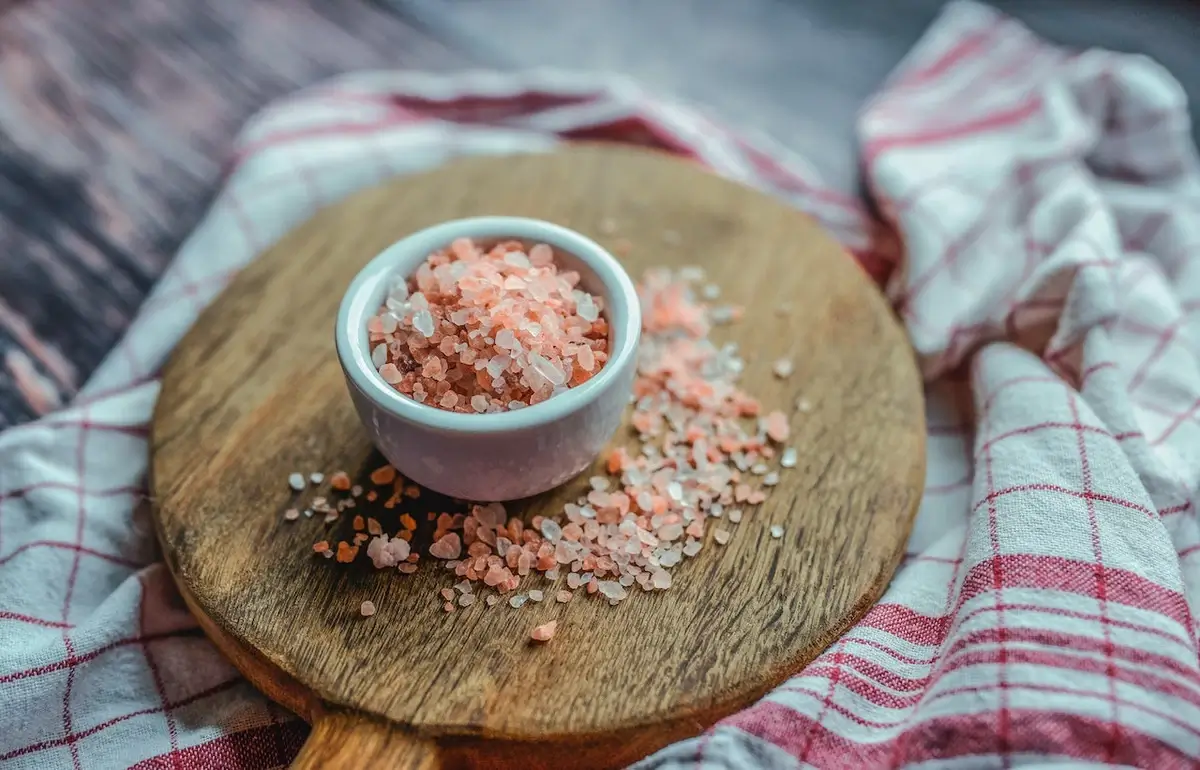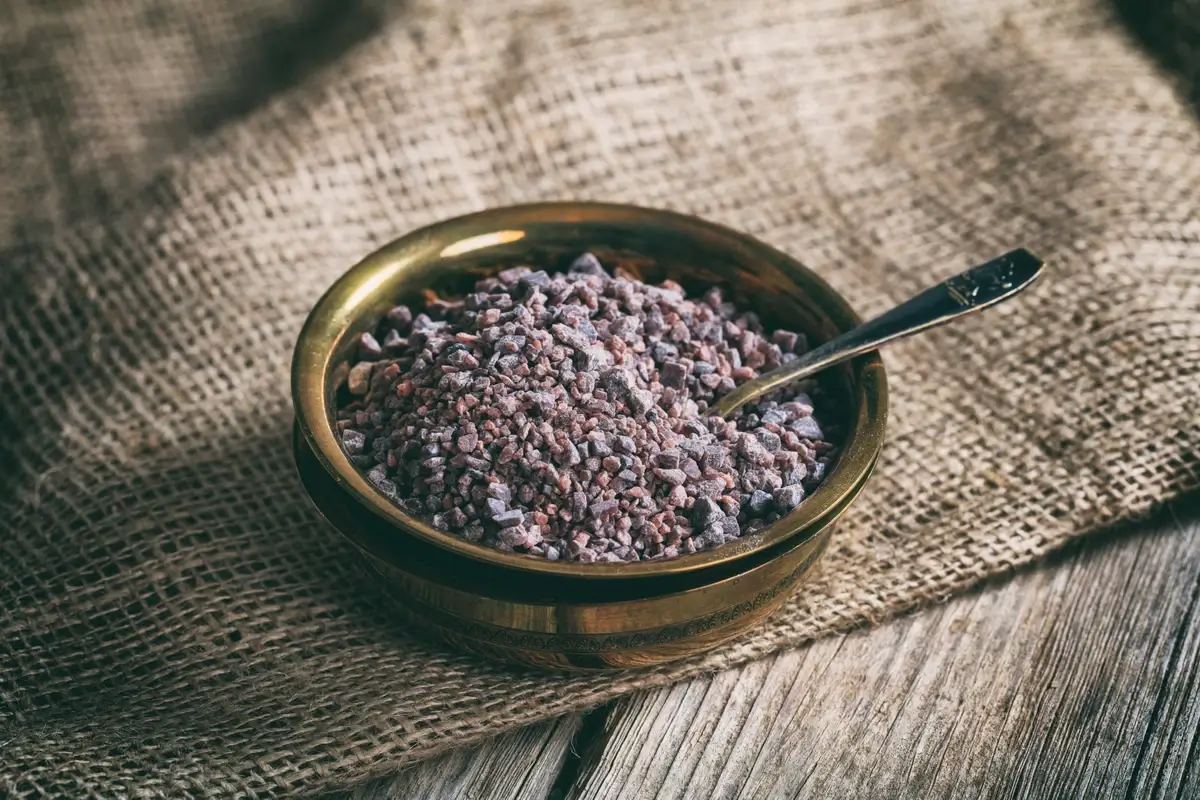Hey there, salt enthusiasts and curious minds! Welcome to this treasure trove of fun facts about salt. Yeah, you heard it right. We’re dedicating a whole article to those teeny, tasty crystals you sprinkle on your fries.
You might think salt is just a common mineral, another face in the culinary crowd, but it’s got a history that’s rich, a chemistry that’s fascinating, and an impact that’s global. Oh boy, we’re diving into 20 finger-lickin’, mind-blowin’ salt fun facts that’ll make you look at that shaker on your table differently. From ancient Rome soldiers to Himalayan salt rocks, we’ve got the scoop on all things about salt. So grab a snack (preferably a salty one), and let’s get this salty soirée started!
1. Ancient Roman Soldiers Were Sometimes Paid in Salt
Talk about a salty paycheck, right? In Ancient Rome, soldiers were sometimes paid in salt, a commodity that was so important it gave us the word “salary” from the Latin “salarium.” Yes, you can thank the Roman legions for your monthly earnings, at least linguistically.
So why was salt such a high-value item? Simple—it was crucial for preserving food, which was vital for long military campaigns. Rome was ahead of its time in many ways, but Ziploc bags and refrigerators weren’t one of them.
2. Salt Can Actually Expire
Ever wonder if that ancient canister of table salt in the back of your cabinet has gone bad? Well, brace yourself for this fun fact about salt: it can expire! Now, sodium chloride itself is stable, but the added iodine and anti-caking agents can degrade over time, altering the taste and texture.
While it won’t hurt you, it might mess with your culinary masterpiece. So if your salt container has been collecting dust since the Bush administration, it’s probably time to replace it.
3. The Dead Sea Is One of the Saltiest Bodies of Water on Earth
Pack your bags and your floaties; we’re taking a salty plunge into the Dead Sea. This iconic body of water is basically nature’s salt factory, containing a salt concentration of around 30%. That’s 8.6 times saltier than the ocean!
Apart from making you float like a cork, the mineral-rich water of the Dead Sea is touted for its therapeutic benefits. People flock from around the world to bask in its salty glory. Ahoy, Captain Salty!

Toa Heftiba Şinca / Pexels
4. Mahatma Gandhi Led a Salt March to Protest British Salt Taxes
Roll up those sleeves and lace those boots, it’s time to march—salt march, that is. Mahatma Gandhi, the father of Indian civil disobedience, led a 240-mile Salt March to protest the British monopoly on—you guessed it—salt. The march lasted from March to April in 1930 and it was a crucial event that garnered international attention.
The march wasn’t just about seasoning your samosas, it was about independence, self-reliance, and civil rights. Gandhi’s simple act of making salt from seawater defied the British laws and inspired millions. And you thought your protest sign was powerful!
5. Salt Was Once As Valuable As Gold
Hold onto your salt shakers, folks, because this fun fact about salt is a doozy. There was a time when salt was as valuable as gold. Yep, that white stuff you unceremoniously sprinkle on your avocado toast could’ve made you a tycoon in the Middle Ages.
Salt was such a hot commodity because of its preserving properties. Imagine living in a world without refrigeration (sounds like a horror story, right?). Salt was the OG food preserver, so having a stash was like having a Swiss bank account.
6. The Saying “Worth Your Weight in Salt” Has Historical Roots
If someone says you’re “worth your weight in salt,” take it as a high compliment, unless you’re on a low-sodium diet, then maybe not. The phrase actually has historical roots, specifically in ancient Rome. We’ve already chatted about ancient Rome soldiers getting paid in salt, so you know this mineral was basically liquid gold back then.
Being worth one’s weight in salt meant you were incredibly valuable, likely doing something crucial like leading troops or serving as a skilled artisan. So go ahead, relish the phrase, but maybe don’t take it too literally unless you fancy becoming a human pretzel.
7. The Pink Hue in Himalayan Salt Comes from Trace Minerals
Move over, basic white table salt, the glamour diva of the salt world is here! The pink hue in Himalayan salt rocks isn’t just for Instagram aesthetics; it’s from trace minerals like magnesium, potassium, and calcium. Now that’s natural bling!
The rock is mined from the Khewra Salt Mine in Pakistan, one of the oldest and largest salt mines in the world. So next time you’re feeling fancy and grind some Himalayan pink salt onto your salad, just remember, you’re basically sprinkling mineral jewels on your greens.

monicore / Pexels
8. Black Salt, or Kala Namak, Has Sulfuric Undertones
Move over, basic salt, there’s a new exotic player in town! Kala Namak, or black salt, is a staple in South Asian kitchens and has some seriously unique flavors. It doesn’t just add saltiness, but also has a kick of sulfur that gives it a unique, umami flavor.
Mind you, the stuff is actually pinkish-grey when ground but starts as a dark, lava-like rock. It’s used in everything from fruit salads to the famous Indian summer drink, “jal jeera.” So, next time you’re in the mood to elevate your culinary game, think black… salt, that is.

Image source: magazine.giallozafferano.it
9. Too Much Salt Can Cause Your Tongue to Go Numb
In the realm of “everything in moderation,” here’s a weirdo fun fact about salt: chow down on too much, and your tongue might just go numb. That’s right, it’s not just for Novocain at the dentist’s office. Sodium ions can mess with the nerve function in your tongue, creating a numbing sensation.
So, while you might be tempted to go overboard with your salt intake on that popcorn or french fries, be warned. A numbed tongue might just rob you of the joy of tasting anything for a while.
10. Kosher Salt Isn’t Necessarily “Kosher”
Whoa, talk about misleading labels. Here’s the deal: Kosher salt got its name because its larger flakes are good for drawing blood out of meat, a process required for Kosher foods. But the salt itself? It’s not automatically Kosher.
Most brands are, indeed, certified, but don’t assume you’re keeping kosher just by using kosher salt. If you’re trying to stick to a kosher diet, you still need to look for that important Kosher certification on the package. Just a pinch of reality for ya!
11. Morton Salt’s Umbrella Girl Has an Interesting Origin Story
Forget about Marvel superheroes; the Morton Salt girl is the OG icon with a backstory. Created in 1914, she’s more than a century old but hasn’t aged a day. The slogan “When it rains, it pours” was developed to highlight Morton’s anti-caking agent, which let the salt pour freely, even on damp days.
The umbrella wasn’t just for cuteness; it was a genius marketing ploy to signify that Morton’s salt was free-flowing, rain or shine. So, hats—or should I say umbrellas—off to Morton for creating an enduring piece of Americana.
12. A Pinch of Salt Can Make Coffee Less Bitter
Talk about multi-talented! Your trusty table salt isn’t just for seasoning fries or rimming your margarita glass. A pinch of it can actually make your morning cup o’ joe less bitter. Chemistry is at play here: sodium ions can neutralize some of the bitter notes in coffee. So, if you’re one of those people who grimaces after that first sip, consider adding a smidgen of sodium chloride to your brew.
Believe it or not, some high-end cafes even offer salted coffee variations. So, next time you’re playing home barista, sprinkle a little salt and make your taste buds do the happy dance.
13. You Can Clean with Salt
If Mary Poppins had a sequel set in a kitchen, salt would play a starring role. It’s a natural, non-toxic cleaner that can work miracles in your home. Sprinkle it on a lemon half and you’ve got a scouring pad, mix it with vinegar and you’ve got a potent cleaner, and let’s not even start on how it can get red wine out of fabric.
So, next time you spill some pasta sauce on your pristine white tablecloth, don’t rush for chemical cleaners. Grab your salt shaker and make that stain a thing of the past.
14. Salt Has Superpowers When It Comes to Water
Salt doesn’t just make your pasta water taste better; it changes the boiling point of water. Adding salt to water raises its boiling point, a phenomenon known as “boiling-point elevation.” However, you would need to add a significant amount for a noticeable difference, so don’t go chucking an entire salt jar into your pot.
Not only that, salt can lower the freezing point of water, which is why it’s often spread on icy roads in winter. So, basically, salt is the superhero of your kitchen, fighting the villains of dull food and sketchy physics.
15. Salt Has a Love Affair with Chocolate
Oh la la! If salt were to swipe right on a dating app, it would definitely be for chocolate. The two are a culinary match made in heaven. The salt enhances the sweet, rich flavors of chocolate, creating a balance that makes taste buds swoon.
It’s not just your average Joe who thinks so; gourmet chocolatiers often feature salted chocolates, and high-end restaurants might offer salted chocolate desserts as their pièce de résistance. So, next time you’re snacking on some chocolate, give it a salty edge and relish the delicious matrimony.

Lisa Fotios / Pexels
16. The First Town in the U.S. to Be Lit by Electric Light Was a Salt Mine
Here’s a bright idea—did you know the first place in the U.S. to glow under electric light was a salt mine? Yep, Thomas Edison was the guy behind this, and the place was a mine in Fairport Harbor, Ohio. This fun historical fact turns salt mines into the “cool kid” at the geology party.
Before the era of TikTok and Instagram filters, this was the kind of innovation that got people talking. Imagine being a miner back then and suddenly, “Let there be light!” Just another reason why salt rocks. Literally.
17. Salt Is the Only Rock We Eat
This mineral goes straight from the Earth’s crust onto your dinner plate. That’s right, salt is a bona fide rock, and it’s the only one we eat. Most minerals are best left in the earth or used for industrial purposes, but salt has found its way into our kitchens—and hearts.
So the next time someone says you “rock,” you might want to think about taking it literally. After all, if you’re what you eat, and you’re eating rocks, well then you’re a walking, talking geology lesson!
18. Inuit Cultures Used Saltwater-Soaked Driftwood to Get Their Salt Fix
Who needs a salt shaker when you’ve got driftwood? Yup, Inuit cultures have been utilizing saltwater-soaked driftwood as a source of salt. Talk about resourcefulness! This is an excellent example of humans adapting to what’s available in their environment.
It wasn’t Morton’s, but hey, it did the trick. Salt isn’t just a luxury; it’s a necessity, and people find fascinating ways to get it into their systems, even in the most remote of conditions.

Upsilon Andromedae / Flickr
19. Salt Is Critical to Our Nervous System
We’re getting into the biology class you wished you’d had in school. Salt is vital for the human nervous system. Sodium ions (that’s the ‘sodium’ in sodium chloride, folks) help send electrical signals between nerve cells. It’s like the Wi-Fi of the human body, maintaining a connection between your brain and muscles.
If you ever wondered why athletes sometimes take salt tablets, now you know. So the next time you’re sweating buckets, remember, salt isn’t just making your food taste better; it’s keeping your body in check.
20. Opera Music and Salt Crystals
Opera: good for the soul, and apparently, for salt crystals too! Japanese scientist Yoshiro Nakamatsu, also known as Dr. NakaMats, won an Ig Nobel Prize for demonstrating how salt crystals formed differently when exposed to opera music. An Ig Nobel Prize is the cheeky cousin of the real Nobel, awarded for research that first makes you laugh, then think.
So how does Puccini affect your table salt? According to Dr. NakaMats, the vibrations from the opera music created more intricate and beautifully shaped salt crystals. It’s almost like the salt was trying to waltz its way into a more elegant form. And it did!
For those who remember growing salt crystals in school science projects, imagine what could have happened if you’d played a little Verdi in the background. So go ahead, serenade your salt; you might just inspire it to become a work of art!
FAQ
What are 10 interesting facts about salt?
- Salt of the Earth: First off, you’ll find salt everywhere. It’s in the ocean, in your tears, and even on the surface of Jupiter’s moon, Europa. It’s as if the universe is hosting the ultimate beach party, and salt got an all-access pass.
- A Miner’s Treasure: Forget gold or diamonds; once upon a time, salt was more valuable than either. It was so precious that Roman soldiers were sometimes paid in salt. The term “salary” comes from the Latin word “salarium,” which was the money used to pay Roman soldiers for the purchase of salt.
- Shake It Till You Make It: The classic salt shaker has a mortal enemy known as humidity. Ever notice rice grains in some shakers? That’s not a culinary recommendation; the rice acts as a desiccant, helping to keep the salt dry and shakable.
- Flavor Wizard: Salt doesn’t just make things salty; it’s a full-blown flavor wizard. A sprinkle of salt can reduce bitterness, enhance sweetness, and even make other flavors more, well, flavorful. It’s like the hype man of the culinary world.
- A Pinch of Mortality: On the dark side, too much salt can lead to hypertension, kidney disease, and cardiovascular issues. On the flip side, too little salt is also harmful. Balance, young Padawan, balance.
- Salt Spa, Anyone?: Himalayan pink salt isn’t just for your fancy kitchen; it’s a spa day favorite. People claim that sitting in a room made of this salt can detoxify your body. Scientific backing for these claims is, however, as scanty as a Speedo.
- Salt & Ice Challenge: Not Cool: Do you remember the “Salt & Ice Challenge,” an internet trend where kids would put salt and ice together on their skin to see how long they could bear it? Turns out, this combo can quickly cause frostbite. Salt lowers the freezing point of water, making the ice much colder than it should be. Please, don’t try this at home.
- The Silent Explosive: Believe it or not, a mix of salt and other chemicals can create an explosive reaction. Sodium (the “Sod-” in “sodium chloride,” which is table salt) is highly reactive. Let’s just say, don’t invite sodium to your pool party.
- The Holy Salt: In various religions and cultures, salt is used for rituals and symbolism, often representing purity or the divine. In Japan, Sumo wrestlers toss salt into the ring before a match to purify it, which must make for the most spiritually-seasoned wrestling arena.
- Art of Salt: Salt isn’t just for your fries or rituals; it’s for art too! Many artists use salt to create stunning, intricate designs. From salt labyrinths to incredibly detailed salt sculptures, this humble mineral is a muse that asks for nothing but a dash of creativity.
What is a crazy fact about salt?
Well, prepare to be amazed! A pinch of salt has more atoms than there are stars in the observable universe. We’re talking roughly 1.2 x 10^19 atoms in just a single grain of table salt. So, the next time you’re salting your fries, remember you’re wielding the power of countless stars in your fingertips. Cosmic, isn’t it?
What are the facts about the origin of salt?
Salt, like any good superhero, has an origin story. It can come from two primary sources:
- Evaporated Sea Water: When oceans evaporate, they leave behind the treasure that is salt. Coastal salt pans often exploit this natural process, effectively mimicking the sun and wind to produce fine grains of salt.
- Mining: In areas that were once ancient, salty seas, we can mine salt from deep within the earth. These deposits, formed from evaporated water bodies, sometimes date back hundreds of millions of years.
- The Universe’s Contribution: As for salt beyond our Earth, it’s believed to be formed by nuclear fusion in stars, just like other elements on the periodic table. How’s that for a celestial seasoning?
How old is the salt that we eat?
Now, this is a spicy question. The age of the salt you consume can vary based on its source:
- Sea Salt: This is relatively young, forming whenever seawater evaporates. So, if your salt came from the sea, it could be as young as a few weeks or months old, like a rookie in the salt game.
- Rock Salt: This kind of salt comes from ancient seabeds that have dried up and got buried by layers of rock and soil. The age can be staggering, ranging from millions to possibly hundreds of millions of years old. Your table salt could predate the dinosaurs, making it the culinary equivalent of a fossil!
Why are people obsessed with salt?
- Flavor Amplifier: Salt is essentially the fairy godmother of food. With a wave of its sodium-chloride wand, it enhances flavors, making them more vibrant and engaging.
- Biological Need: Humans need some amount of sodium to maintain bodily functions like fluid balance and nerve transmission.
- Culinary Versatility: From curing meats to pickling vegetables, salt has a wide range of uses in the kitchen that extends beyond mere seasoning.
- Cultural Significance: Salt has been a symbol of purity, a currency, and a mark of hospitality across cultures, adding a sprinkle of mystique to its resume.
Why was salt so rare?
- Geographic Limitations: In ancient times, salt wasn’t evenly distributed. If you lived near the sea or salt mines, you were salt-rich; if not, you were out of luck.
- Labor-Intensive Poduction: Early methods of salt extraction, like evaporating sea water in shallow pans, required significant time and labor.
- Lack of Transportation: With no trains, planes, or delivery services, transporting salt over long distances was a logistical nightmare.
What are the hidden names of salt?
Ah, salt is like a spy with multiple aliases: Sodium Chloride (the full name), Halite, Rock Salt, Sea Salt, Kosher Salt, and even Fleur de Sel. In ingredient lists, you might see it disguised as sodium bicarbonate, sodium nitrate, or monosodium glutamate (MSG).
What is the most unique salt?
Fleur de Sel wins the Oscar for the Most Unique Salt. Harvested by hand from the top layer of sea salt ponds, it forms only under specific wind and weather conditions. Each crystal is a unique flake, and it’s praised for its complex flavor profile and delicate texture. Some even call it the “caviar of salts.”
What does liking salt say about you?
Well, there’s no definitive psychology of salt-liking, but some theories suggest that a preference for salt could be tied to certain personality traits like adventurousness or high energy. It could also indicate that your body is low on sodium and is craving a top-up.
Who had salt first?
Salt has been around since, well, forever—dating back to Earth’s primordial soup. But the first known case of humans actively harvesting salt dates back to around 6,000 B.C. in Romania and China. It seems we’ve been salty creatures from the get-go.





